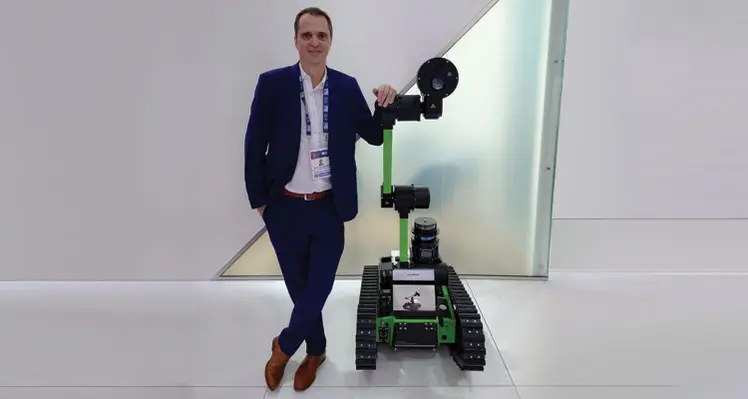Emmanuel Guilhamon, EMEA Process Industries manager at Rockwell Automation, speaks to Oil Review Middle East about how process automation can enable a sustainable future, and the shift to autonomous operations
Companies are increasingly addressing ESG and sustainability in their operations – and smart technology solutions can play a key role here.
“Automating is all about making our customers more efficient in whatever they do, so inherently by design automation drives sustainability, because whenever you make a company more efficient in whatever it is doing, they are taking less time, using fewer resources, and able to do more with less,” says Guilhamon.
“As we progress in process automation, we are also developing our own technologies, to increase our impact in helping companies be more efficient. Right now we are working on using AI and machine learning to take our customers’ processes and make them increasingly productive. So there’s an accelerating momentum towards efficiency. That’s the first element.”
Another element is decarbonisation, by reducing the carbon footprint of industries such as oil and gas and promoting the growth of industries that do not have a carbon footprint, such as renewable energy, carbon capture and green hydrogen. “Here, it’s about making these industries commercially viable, so that they are more widely used. Because in the end, business is business, and as soon as these industries get below a certain price point, it will be a driving force for renewable energy to take over from oil and gas and fossil fuels.
“So the direction we’re going, is developing off-the-shelf solutions to be able to produce green hydrogen and capture carbon in a very cost effective way, as well as developing our digital solutions, such as energy management systems, to be able to produce green hydrogen more cost effectively. While process automation is a hardware-driven solution, energy management solutions is entirely software - a layer of digital to effectively manage the energy sources to produce green hydrogen. So you can use the energy source that will have the lowest cost and be the most applicable at that point in time to produce green hydrogen, for example the most effective combination of solar, wind and batteries.”
Reducing carbon footprint can also be a benefit of autonomous or unmanned operations, which are now within reach thanks to advances in automation. The majority of the control and automation technologies that are needed to develop an unmanned facility are in fact already in use in the offshore oil and gas industry.
Guilhamon stresses that operations do not have to be fully autonomous to realise benefits. “The goal is for machines to do the work humans could do, if it brings a benefit in terms of safety or carbon footprint, or if we can better deploy employees in a different area of the company. In an offshore production facility, if we can have one human less on a rig, it is one human who won’t be exposed to the risks on that platform, one human less to bring offshore in a helicopter, thus reducing carbon footprint. So even if the operation is not fully autonomous, you still can unlock business value on that journey, by reducing the number of people on board.”
He goes on to highlight Rockwell’s partnership with Taurob, which supplies inspection robots rated intrinsically safe to work in oil and gas environments. With its ATEX certification, the robot can safely approach the source of a gas leakage for detailed inspection, for example, eliminating risks to human personnel.
“What we’ve done is built a management system for the robots, which encompasses creating a whole digital twin of the facility in which the robot operates, so we have a 3D representation of the robot moving in that environment. A remote operator can assign missions to the robot, for example to check on certain equipment, inspect for corrosion, take pictures of different valves to indicate pressure. We can operate that system to help the robot be more autonomous.
“We’re robot agnostic, so we can work with any robots and build management systems for them to automate the use of their robots. So there is the digital layer on top of the hardware, and ultimately the goal or vision could be go to unmanned operations, bringing benefits of safety and reduction of carbon footprint. However, along that journey, any time we can reduce the number of people on board, we’re already unlocking value.”
At Rockwell Automation’s Automation Fair this month, Kalpyso, Rockwell Automation’s Digital Services arm, demonstrated how it had enabled an oil and gas supermajor to develop the first of its kind remote management of a fleet of mobile ground robots used for automated equipment monitoring, resulting in significant improvements in operational efficiency, OPEX reduction, reduced GHG emissions and increased personnel safety.
There is “a lot of appetite” in the Middle East for this technology from the oil and gas industry in the Middle East, Guilhamon says, where Rockwell is in active conversations with some big industry players. Initial conversations are also being held with the metals industry, often characterised by huge facilities and dangerous environments, where being able to send a robot to inspect equipment offers big benefits in terms of safety and man-hours.
So how does Guilhamon envisage the future of autonomous operations? “From here, instead of having humans assigning missions to robots, the future of the technology is to use AI to control the robots to go further. So instead of humans monitoring a fleet of robots in a facility and in fleets of facilities, having AI do this.
“We’re still some way from that, but that would be the vision for the future.”









